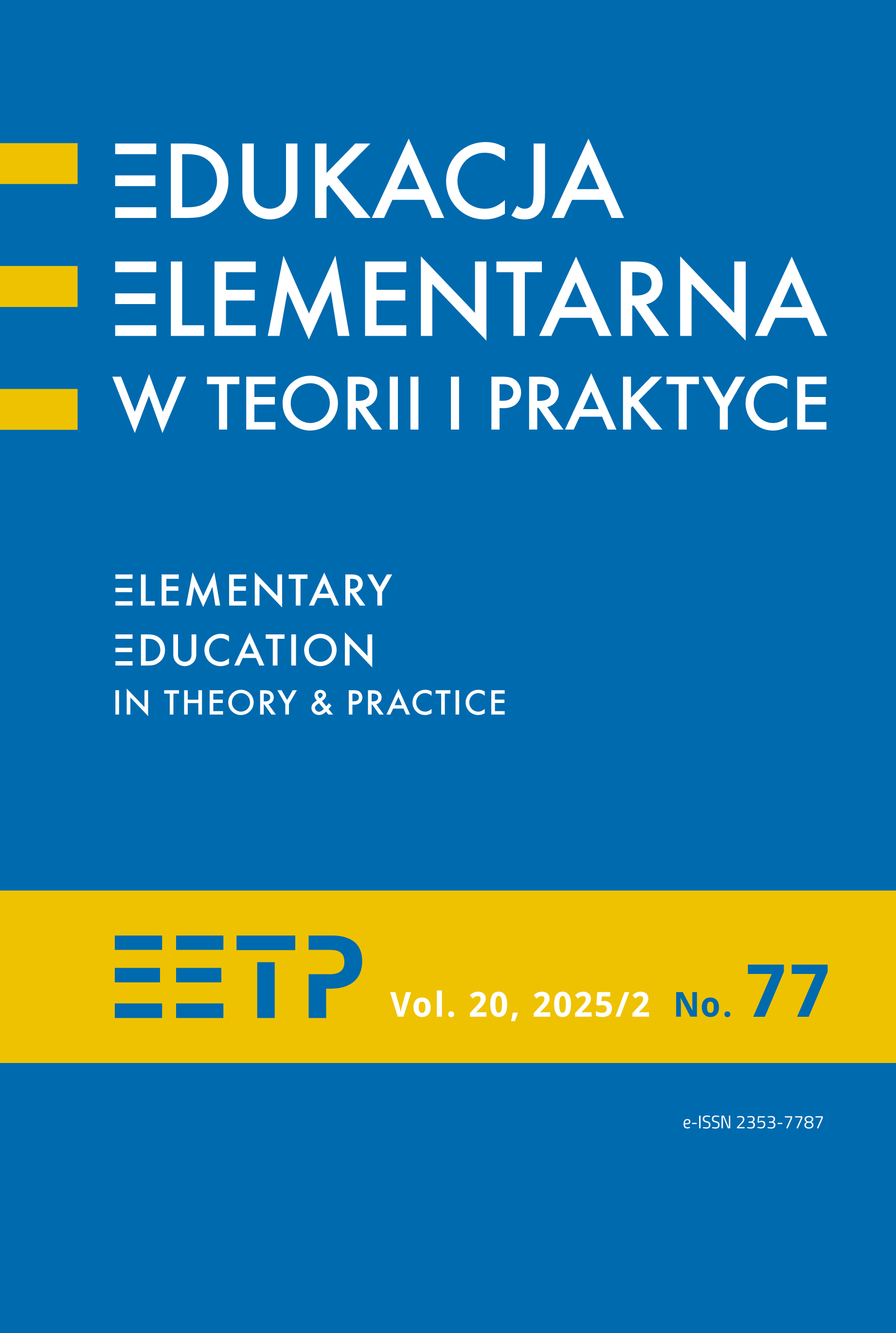Education Through Service as a Factor Dynamising the Creative Activity of the Individual in the Education Process of Future Elementary Education Teachers
Abstract
The reflection undertaken in this article focuses on the issues of education through service and creative activity. The main objective is to determine to what extent education through service, incorporated in the process of students’ education, is a factor that dynamises a person’s creative activity, in the light of literature and the author’s own empirical research. In reporting on the stated aim, two research problems are formulated:
- How does education through service constitute a dynamising factor for a person’s creative activity?
- How, according to the students, does education through service affect their creative activity?
In the first part of the article, a theoretical analysis of the structure of the educational and didactic strategy: education through service, was carried out in the context of factors that foster and motivate creative activity. In the second part, a qualitative analysis was made, using the hermeneutic method, of the statements of the students who participated in the project implemented within the educational strategy discussed.
The conclusions formulated provide a basis for undertaking further empirical analyses in this area, and also enable the identification of education through service as an educational strategy that triggers and reinforces the need for creative activity in students – future teachers.
References
Chałas, K. (2023). Dydaktyka akademicka w uniwersytecie katolickim. T. 4: Edukacja przez służbę przyszłych nauczycieli. Wydawnictwo „Scriptum”.
Furco, A. (2001). Is service learning really better than community service? A study of high school service program outcomes. W: A. Furco i S.H. Billig (red.), Service-learning: The essence of the pedagogy (s. 23–52). Information Age Publishing.
Gregorová, A.B., Heinzová, Z. i Chovancová, K. (2016). The impact of service-learning on students’ key competences. The International Journal of Research on Service-Learning and Community Engagement, 4(1), s. 368–369. https://doi.org/10.37333/001c.29686
Gregorová, A.B., Meggyesfalvi, B., Hadrévy, B.C., Šolcová, J., Fabac, T., Hauser, M., Novota, S., Bere, D., Pintea, C., Mădălina, B., Lissowska Lewkowicz, A., Walas, A., Tóth, A.F. i Nagy, B. (2022). Service Learning w pracy z młodzieżą. Podręcznik dla tutorów, edukatorów i nauczycieli. Stowarzyszenie Centrum Wolontariatu.
Howard, J. (2003). Service-learning research: Foudational issues. W: S.H. Billing i A.S. Waterman (red.), Studying service-learning: Innovations in education research methodology (s. 1–12). Taylor & Francis Group.
Kamiński, J., Łysiak, M. i Badora, A. (2023). Service Learning dla nauczycieli akademickich. Przewodnik metodyczny. Wydawnictwo Katolickiego Uniwersytetu Lubelskiego. https://www.kul.pl/files/841/public/ddu/podreczniki/Service_Learning_dla_nauczycieli_akademickich.pdf
Kozielecki, J. (1996). Człowiek wielowymiarowy. Wydawnictwo Żak.
Nęcka, E. (2016). Psychologia twórczości. Gdańskie Wydawnictwo Psychologiczne.
Szmidt, K. (2020). Pedagogika twórczości. Gdańskie Wydawnictwo Psychologiczne.
Wade, R. (2008). Service learning. W: L.S. Levstik i C.A. Tyson (red.), Handbook of research in social studies education (s. 109–123). Taylor & Francis.
Copyright (c) 2025 Elementary Education in Theory and Practice

This work is licensed under a Creative Commons Attribution-NoDerivatives 4.0 International License.
- When submitting a text, the author declares that he/she is the Author of the article (hereinafter referred to as the “Work”) and:
- he/she owns the exclusive and unlimited copyright to the Work,
- is entitled to dispose of the copyright to the Work.
Declares that it does not infringe any third party copyrights or legal rights.
Declares that there is no conflict of interest.
2. At the same time, the Author grants the Ignatianum University in Cracowa royalty-free, non-exclusive and territorially unlimited licence to use the Work in the following fields of exploitation:
- recording the Work in a hard copy, as well as on a digital or magnetic medium;
- reproduction of the Work using any technique, without limitation of the number of editions or copies;
- distribution of the Work and its copies on any medium, including marketing, sale, lending, and rental;
- introduction of the Work into a computer memory;
- disseminating the Work in information networks, including in the Internet;
- public performance, exhibition, display, reproduction, broadcasting and re-broadcasting, as well as making the Work available to the public in such a way that everyone can have access to it at a time and place of their own choosing;
- within the scope of dependent rights to the Work, including in particular the right to make necessary changes to the Work resulting from editorial and methodical development, as well as to translate the Work into foreign languages;
The licence is granted from the moment of the transfer of the Work to the Ignatianum University in Cracow. The Ignatianum University in Cracow is entitled to grant further sub-licences to the Work within the scope of the right granted. The licence is time-limited and it is granted for a period of 15 years, starting from the date of its granting.
Authors are permitted and encouraged to publish their text online (e.g. in their institution’s repository or on the institution’s website) before or during the submission process as this may lead to beneficial exchanges, as well as earlier and greater citation of the published text (See The Effect of Open Access). We recommend using any of the following portals of research associations:
- ResearchGate
- SSRN
- Academia.edu
- Selected Works
- Academic Search




